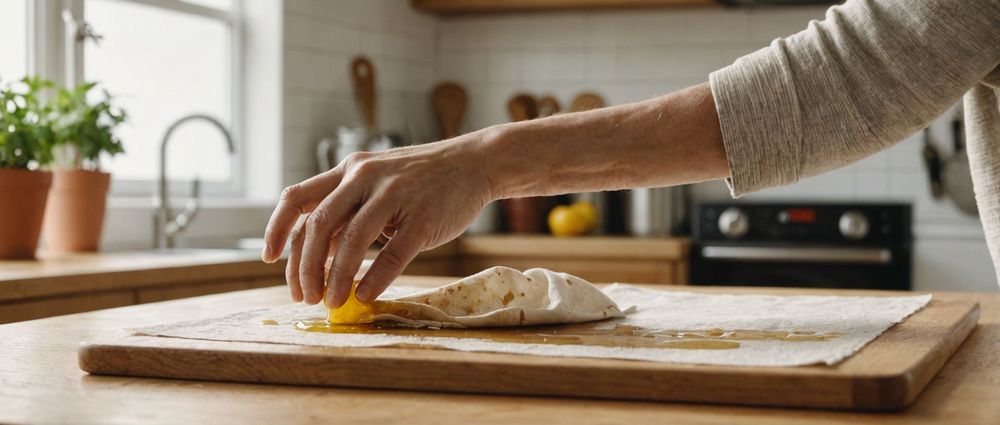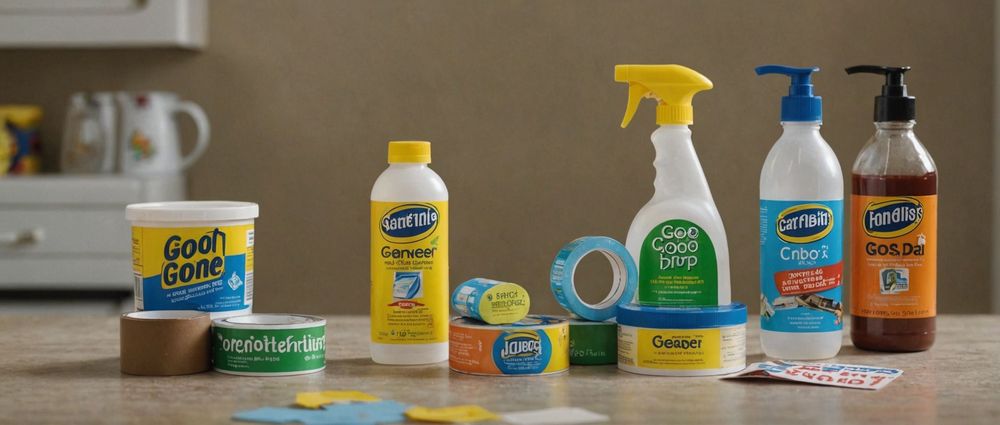How to Remove Sticky Residue: Effective Ways to Eliminate It for Good

Sticky residue can be a frustrating problem encountered in many households, whether it’s due to tape, labels, or spills. Thankfully, there are effective ways to eliminate sticky residue for good. By employing a combination of household items and targeted techniques, you can restore surfaces to their original condition without aggressive chemicals or extensive scrubbing. In this article, we will explore various methods to tackle sticky residues on different materials and surfaces.
Understanding the Types of Sticky Residue

Sticky residue can originate from various sources, leading to different challenges in removal. Common types include adhesive from tape or labels, dried food spills, and even glue remnants. Understanding the type of residue you’re dealing with is crucial when determining the best removal method. Below are common sources of sticky residues:
- Adhesive residues: Often left by stickers or tape when removed improperly.
- Food residues: From spilled syrups, sauces, or greasy substances.
- Glue residues: Resulting from arts and crafts or construction projects.
- Wax residues: From candles that have dripped onto surfaces.
- Paint: Dried paint can sometimes leave a sticky film when not applied correctly.
Household Remedies for Removing Sticky Residues

Before reaching for commercial products, try using common household items that are often just as effective. Here are a few methods to consider:
- Vinegar: Soak a cloth with white vinegar and place it on the residue for a few minutes. The acidity helps break down the adhesive.
- Oil-based solutions: Try using cooking oil or baby oil. Apply the oil to the sticky area and let it sit before wiping it clean.
- Baking Soda Paste: Mix baking soda with water to form a paste. Apply the paste to the residue, let it sit for a few minutes, and scrub gently.
- Rubbing Alcohol: Dampen a cloth with rubbing alcohol and rub it on the sticky area. It’s particularly effective for glue residues.
Specific Removal Techniques for Various Surfaces
Different surfaces can require specific techniques and precautions to ensure damage does not occur while removing sticky residues. Below are some tailored strategies for common surfaces:
1. Glass
For glass surfaces, a combination of vinegar and water works wonders. Spray the solution on the residue, let it sit for a few minutes, and then wipe away with a soft cloth. If the residue persists, you can use a plastic scraper to carefully lift it off without scratching the glass. Always ensure that the scraper is clean to avoid causing any scratches.
2. Wood
When dealing with wood, it’s essential to use a gentle approach. Rubbing a bit of cooking oil on the sticky area can help lift the residue without damaging the finish. Afterward, be sure to clean the surface with a mild detergent and water to remove any oil. Avoid excessive moisture as it can warp the wood.
3. Fabrics
For fabrics, start with a test on an inconspicuous area. Apply rubbing alcohol or a mix of dish soap and water. Dab gently with a cloth until the residue lifts. Rinse the area with cold water afterward to prevent any linger of the adhesive, and wash the fabric as usual. Always check the care label to ensure the cleaning method is safe for the fabric.
Commercial Solutions: When to Turn to Them
While many household items can be incredibly effective, sometimes you may encounter very stubborn residue that requires commercial solutions. There are specialized adhesive removers available that can penetrate and dissolve sticky residues effortlessly. However, always read the label and instructions to verify that the product is suitable for the surface you’re working on. Below are a few popular options:
- Goo Gone: A popular adhesive remover that works on a variety of surfaces.
- Goof Off: Especially effective for tough stains and residues from paints and glues.
- Adhesive removers: Many brands provide targeted solutions for labels and tapes – just ensure compatibility with your surface.
Conclusion
Removing sticky residue doesn’t have to be overwhelming or costly. By using either household items or commercial solutions, you can effectively tackle common sticky challenges around your home. Always consider the surface you’re working with and test on a small area if you’re unsure. With the right approach, you can restore surfaces to their pristine state and eliminate frustrating sticky residues for good.
FAQs
1. What is the best way to remove sticker residue without damaging the surface?
The best way is to use oil-based solutions like cooking oil or baby oil which are gentle and effective. Applying vinegar can also help dissolve the adhesive safely.
2. Can I use rubbing alcohol on all surfaces?
No, rubbing alcohol is not suitable for all surfaces. Always test on an inconspicuous area first, particularly with sensitive materials like wood or some plastics.
3. How long should I let vinegar sit on sticky residue?
Let vinegar sit for at least 5-10 minutes to penetrate the adhesive before wiping it away for the best results.
4. Is it safe to use Goo Gone on painted surfaces?
Yes, Goo Gone is generally safe for painted surfaces, but it’s always a good idea to do a small patch test first to ensure no damage occurs.
5. What should I do if the residue still won’t come off?
If the residue persists, repeat your chosen method or consider using a commercial adhesive remover specifically designed for tough stains. Following up with a good cleaning can also help.


